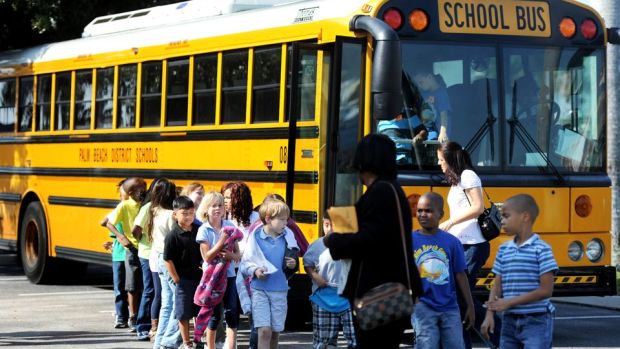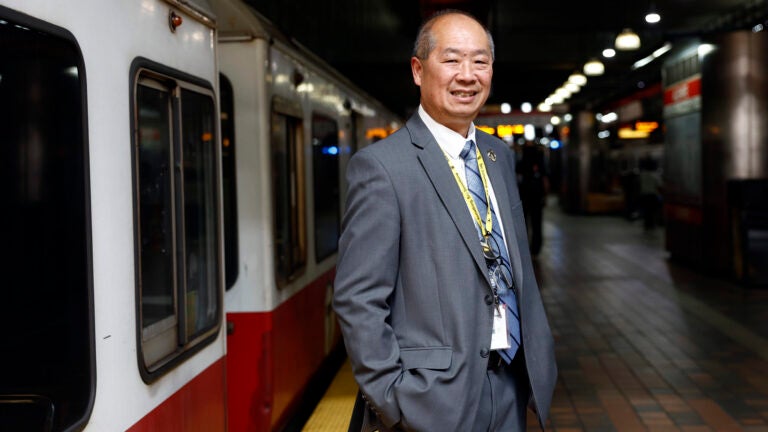You are using an out of date browser. It may not display this or other websites correctly.
You should upgrade or use an alternative browser.
You should upgrade or use an alternative browser.
General MBTA Topics (Multi Modal, Budget, MassDOT)
- Thread starter Waldorf
- Start date
That may be true - but even with the Hummers and Cybertrucks of the world - it's really the tractor-trailers and buses that rip up pavement.It's not - road wear increases as the fourth power (square of the square) of axle load - so a vehicle that's just 19% heavier will cause twice the road wear, despite having a much smaller gap in fuel efficiency.
BeansTheCat
Active Member
- Joined
- Aug 14, 2024
- Messages
- 110
- Reaction score
- 329
https://www.mbta.com/news/2025-01-17/mbta-shares-planned-service-outage-scheduled-january-june-2025
Noted outages:
Noted outages:
- RL Ashmont to JFK/UMass from April 1 – April 9 for proactive rail maintenance.
- OL North Station to Oak Grove from May 10 – May 18 to support MassDOT’s Maffa Way/Mystic Avenue Bridge construction project.
- OL North Station to Forest Hills from June 21 – June 29 for signal upgrade work.
- BL Bowdoin to Airport from June 7 – June 15 for infrastructure work.
- Haverhill and Newburyport/Rockport Line from Oak Grove to North Station / Swampscott to North Station will be closed the following days to support MassDOT’s Maffa Way/Mystic Avenue Bridge construction project and MBTA signal work.
- January 18 – January 19
- February 1 – February 2
- February 15 – February 16
- March 8 – March 9
- March 22 – March 23
- April 5 – April 6
- April 24 – April 27
BeansTheCat
Active Member
- Joined
- Aug 14, 2024
- Messages
- 110
- Reaction score
- 329
https://www.mbta.com/news/2025-01-17/mbta-shares-planned-service-outage-scheduled-january-june-2025
Noted outages:
- RL Ashmont to JFK/UMass from April 1 – April 9 for proactive rail maintenance.
- OL North Station to Oak Grove from May 10 – May 18 to support MassDOT’s Maffa Way/Mystic Avenue Bridge construction project.
- OL North Station to Forest Hills from June 21 – June 29 for signal upgrade work.
- BL Bowdoin to Airport from June 7 – June 15 for infrastructure work.
- Haverhill and Newburyport/Rockport Line from Oak Grove to North Station / Swampscott to North Station will be closed the following days to support MassDOT’s Maffa Way/Mystic Avenue Bridge construction project and MBTA signal work.
- January 18 – January 19
- February 1 – February 2
- February 15 – February 16
- March 8 – March 9
- March 22 – March 23
- April 5 – April 6
- April 24 – April 27
I can't help but feeling a bit disappointed that we are going to be seeing more weeklong shutdowns, especially for "proactive rail maintenance" and "infrastructure work". Cynically, it looks like the earlier TIP work was not done as well as later shutdowns, to the point where some of it requires significant effort to either fix or address problems that weren't previously identified. I imagine the Ashmont branch is getting CWR because there wasn't enough experience to do that in October 2023. Hopefully a better description of the work planned (and then performed) for the Ashmont branch shutdown and the partial Blue Line shutdown is provided.
AFAIK, all the subway and green line rail is continuously welded and has been for a long time now.I can't help but feeling a bit disappointed that we are going to be seeing more weeklong shutdowns, especially for "proactive rail maintenance" and "infrastructure work". Cynically, it looks like the earlier TIP work was not done as well as later shutdowns, to the point where some of it requires significant effort to either fix or address problems that weren't previously identified. I imagine the Ashmont branch is getting CWR because there wasn't enough experience to do that in October 2023. Hopefully a better description of the work planned (and then performed) for the Ashmont branch shutdown and the partial Blue Line shutdown is provided.
My colleague published this last month, thought it would be of interest to folks here.
StreetsblogMASS
New member
- Joined
- May 26, 2023
- Messages
- 51
- Reaction score
- 353
Two school bus news items:

 mass.streetsblog.org
mass.streetsblog.org

 mass.streetsblog.org
mass.streetsblog.org

EPA Will Finance 177 New Electric Buses for Mass. School Districts - Streetsblog Massachusetts
Boston, Springfield, Hingham, and the Hamilton-Wenham Regional School District will together receive about $50 million from the new Clean Heavy-Duty Vehicles Grant Program.
The City of Boston currently has 40 electric school buses operating, representing about 5 percent of its fleet of 751 buses.
But with the 125 new buses funded from this grant, electric buses will comprise more than one-fifth of the Boston school bus fleet.

Want Safety Cameras On Your Kids' School Buses? Here's How to Get Them - Streetsblog Massachusetts
School districts can now use bus-mounted cameras to issue fines against drivers who illegally pass stopped buses – but cities, towns, and school districts still need to adopt the law at the local level.
Your colleague is a legend -- this document has been an institution for decades, and it's amazing that it continues to be maintained. Major props, appreciation, and thanks to your colleague!
My colleague published this last month, thought it would be of interest to folks here.
IMO, it's probably difficult to overstate how successful TM has been under Johnson. Like, I'm pretty sure the Globe gets a quote from TransitMatters on most, if not all, articles they write about the T. The TM Data Dashboards have been transformative, both within advocacy circles and beyond. The Regional Rail initiative wouldn't be anywhere near where it is today without TransitMatters' work. The whole thing is really just a remarkable success story. TM's loss (and our loss in general, as an advocacy community) is absolutely Toole Design's gain. Hopefully Toole is able to do good work in Boston under Johnson's leadership -- and either way, I'm really happy for him -- I have to think this is a tremendous opportunity for him. It's certainly well-deserved.I don't really know what thread is most appropriate for this, but the TransitMatters executive director is leaving for Toole Design.

Media Statement: TransitMatters Announces Leadership Transition — TransitMatters
Today, the board of TransitMatters announced that Executive Director Jarred Johnson will be leaving the organization next month to pursue a new career opportunity, leading the Boston office of Toole Design.transitmatters.org
themissinglink
Senior Member
- Joined
- Jan 13, 2018
- Messages
- 1,505
- Reaction score
- 3,828

Ex-Keolis engineer admits stealing $8M from MBTA in plea
A former Keolis engineer has pleaded guilty to stealing more than $8 million from the agency.
Okay but hold on, that article is confusing. He’s charged with wire fraud… but the article also talks about selling wire to scrap yards?
Ex-Keolis engineer admits stealing $8M from MBTA in plea
A former Keolis engineer has pleaded guilty to stealing more than $8 million from the agency.www.wcvb.com
TheRatmeister
Senior Member
- Joined
- Sep 23, 2023
- Messages
- 1,310
- Reaction score
- 2,509
This article explains it better. There were two schemes going on.Okay but hold on, that article is confusing. He’s charged with wire fraud… but the article also talks about selling wire to scrap yards?
- Invoice fraud: Pigsley's friend would buy things using his company, then that company would submit falsified invoices to Keolis for 'work done' or some other false pretenses, Keolis with reimburse the friend, then Pigsley would get whatever the company bought. (And his friend apparently got a cut too.)
- The far more interesting literal wire fraud. Working at Keolis he procured copper wire, then just stole it by having it delivered to his house where it would disappear. He would then sell it for scrap.
themissinglink
Senior Member
- Joined
- Jan 13, 2018
- Messages
- 1,505
- Reaction score
- 3,828

Red Line branch's maximum speed increasing to 50 mph, MBTA says
The MBTA announced that the Braintree branch of the Red Line will be increasing speeds as a result of the Track Improvement Program.
www.boston.com
The Red Line’s Braintree branch will soon increase its speed from 40 miles per hour to 50 miles per hour where feasible, the MBTA announced Monday.
The Red Line branch’s speed restorations are expected to take effect “within days, pending final inspection,” the agency wrote in a press release.
themissinglink
Senior Member
- Joined
- Jan 13, 2018
- Messages
- 1,505
- Reaction score
- 3,828

Boston firefighters rescue man trapped under Orange Line train at North Station - The Boston Globe
The man has been transported to a local hospital for emergency treatment, according to officials.
themissinglink
Senior Member
- Joined
- Jan 13, 2018
- Messages
- 1,505
- Reaction score
- 3,828

MBTA has ‘reached out’ to federal authorities over alleged employee scandal at Cabot Yard, Eng says - The Boston Globe
The move could ratchet up scrutiny of the agency.
themissinglink
Senior Member
- Joined
- Jan 13, 2018
- Messages
- 1,505
- Reaction score
- 3,828

Orange Line service resumes after ‘small fire,’ MBTA officials say - The Boston Globe
There was a small fire in a third rail insulator on the track near Tufts Medical Center, the MBTA said Sunday evening.
Banker & Tradesman
New member
- Joined
- Aug 27, 2024
- Messages
- 43
- Reaction score
- 386
The outgoing director of TransitMatters penned a valedictory op-ed for us, where he calls for a much more robust long-term plan for the T's future:

 bankerandtradesman.com
bankerandtradesman.com

The MBTA Needs a Long-Term Vision – Or We’ll Pay the Price
Greater Boston is a region of big ideas. The MBTA, however, isn’t thinking big enough, and its leaders need the CRE industry’s help to expand their horizons.
Greater Boston is a region of big ideas. The MBTA, however, isn’t thinking big enough.
Massachusetts lacks a coherent strategy for its transit future. Without it, construction costs will keep rising, congestion will worsen, and housing development will continue to be shaped by today’s transit map – locking in car dependency for generations.
The state keeps solving yesterday’s problems instead of anticipating tomorrow’s needs. A world-class transit system drives business investment, increases property values and unlocks commercial growth. But we’re letting short-term funding limitations dictate our region’s future. The result? A region struggling with some of the worst traffic congestion in the country and a housing crisis exacerbated by poor transit access.
Over the next five years, Massachusetts should expand electrification pilots and implement transit-oriented zoning reforms to lay the groundwork for future growth. Within 10 to 15 years, we must move beyond incremental improvements and commit to full regional rail electrification while establishing dedicated funding sources.
Over the next three decades, the goal should be a transit network enabling car-free living at scale – reshaping where people live and work, strengthening the state’s economic competitiveness, and ensuring Greater Boston remains a leader in sustainable urban development.
The MBTA has a long-range plan in development. That’s a start.
But we can’t afford another bureaucratic exercise that results in a wish list without commitment or a vague plan with no timeline, funding strategy, or private sector engagement.
